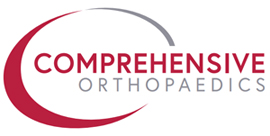Sports Medicine
How we can help you
Sports injuries are a common problem among athletes, both professional and recreational. While most sports injuries are minor and can be treated with simple rest and over-the-counter pain medications, more serious injuries can have significant long-term consequences if not properly diagnosed and treated. The importance of correctly diagnosing sports injuries cannot be overstated.
At Comprehensive Orthopaedics, we know how important it is to accurately diagnose sports injuries. Whether you are a professional athlete or a weekend warrior, injuries can happen and keep you away from your favorite activities for extended period of time. Get your treatment plan that will get you back to your freedom and to your favorite sports activities. Our sports medicine specialists and orthopaedic doctors will provide the most effective therapy to speed up your recovery. Schedule an appointment with one of our sport medicine doctors.






